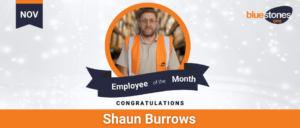With the advent of online shopping, it can be easy to believe that the high street isn’t important anymore – but in-store experiences far outweigh the digital world when it comes to influencing shoppers and increasing basket size. By using the psychology of smell, sight, touch and sound retailers have found they can positively affect how shoppers perceive a store’s product offering.
Colour
It’s well known that McDonald’s incorporated the colour red into their logo as it triggers stimulation, appetite and hunger, and attracts attention – a reason why so many retailers also use red in sale signage. Have you walked past the Next sale and not noticed? It’s not only the colour red retailers make use of. Colour can invoke emotions in people and influence their buying habits.
Want your brand to convey trust and security? Use the colour blue. Opting for a sleek and powerful look? Make use of the colour black. Some retailers stick to their colour palette and rock it all year round – think of B&Q and you picture the colour orange – while others mix it up for seasonal promotions – does any particular colour come to mind when you think about Lush expect for it’s distinctive and simple black and white branding?
Smell
Ever walked past an Abercrombie and Fitch store and been tempted in by the perfumed air? Or the opposite and carried on walking because it’s overpowering? Using scents in retail is powerful, it can trigger memories and emotions enticing people into your store but get it wrong and you can turn shoppers away.
According to studies, people spend more in a scented shop versus an unscented one. This might be because shoppers are likely to spend 44% longer in a shop that has an attractive scent. Using scent marketing is relatively low cost and low risk, so it pays for retailers to experiment with what smells work for them and their target customers.
Touch
Do you ever feel compelled to touch the goods in a shop? Retailers will use tricks to persuade people to touch products as this encourages shoppers to believe the item “psychologically” belongs to them. Once you “psychologically” own something, you’re also much less likely to question the cost.
Brands like Andrex and Dolce & Gabbana have tapped into touch and have altered their packaging to feel more pleasurable, increasing the likelihood that people want to purchase their items. According to research by Anglia Ruskin University different textures have the ability to alter the attractiveness of a product and by increasing attractiveness, the value of a product goes up.
Sound
Doesn’t matter if it’s music or background noise, sound also has a part to play in the psychology of shopping. Just as with smell though, get it wrong and it can turn people off – music too loud or doesn’t match the atmosphere (think Electronic Dance Music playing in a furniture store)? People are likely to leave. Get it right and you can alter people’s spending habits – want shoppers to choose a German wine? Play German music.
Even moderate background or “distraction” noise can influence shoppers – the brain works more optimally and is able to think more creatively in an environment with a moderate level of background noise. For example, shoppers are more likely to pick a new and innovative product over a standard product in a shop that has the optimum background noise level.
By finding the perfect mix of the above, retailers can positively improve the high street experience for shoppers – something online shopping can’t do…just yet!
To find out more about how Bluestones One can help you in-store merchandising, get in touch with the team now.





